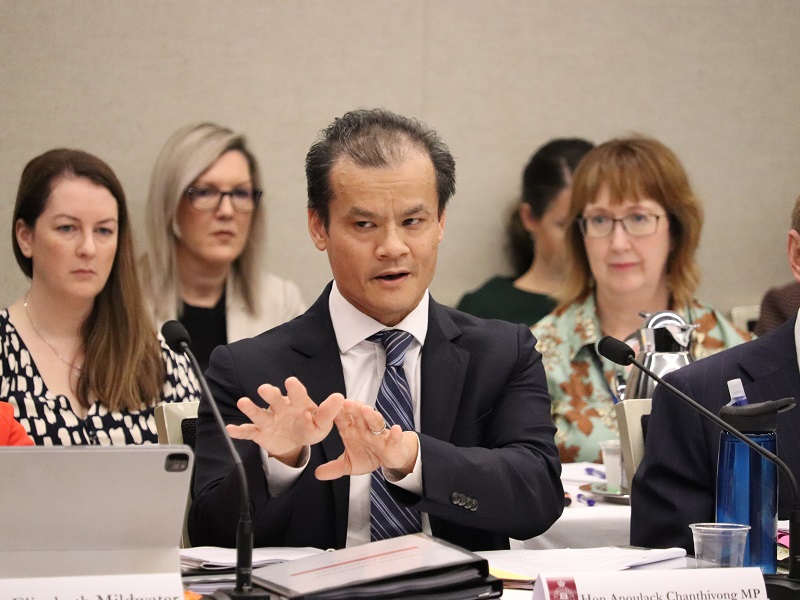The NSW government must become an equity exemplar by applying a new “gender lens” to its innovation funding, according to a group of experts that found a decade of state interventions had failed to shift the flow of capital and opportunity to female innovators.
A year-long inquiry into women’s entrepreneurship in New South Wales found little progress has been made on structural equity challenges despite other jurisdictions making headway.
The findings, which criticise a “fixing women” approach across scattergun programs, have been submitted for consideration in the Innovation Blueprint, which will deliver new innovation policy and has already flagged a “less transactional” approach is coming.
But its authors say their model has potential at the national level.

Commissioned by Investment NSW and released without fanfare this week, the Building an Inclusive Innovation Economy interim report is the result of more than a dozen equity and innovation experts working collaboratively over the last year.
It is critical of past NSW programs for having targeted ‘fixing women’ by improving their networking and access to training.
The state’s past programs, while valuable, have not tackled the structural challenges standing in female innovators way, chair of the Women’s Entrepreneurship Industry Reference Group that led the work, Nicola Hazell, said.
“[The] system, when we actually unpack it, has a number of structural and cultural barriers to women’s success within it,” she told InnovationAus.com
“The entrepreneurial landscape is not one that has been designed for and with women, and so they are working every day to really push against those forces.”
The group’s interim report cites research showing women still make up just one in four startup founders and solo women founders are receiving less than four per cent of venture capital. When women do attract capital, it is significantly less than startups led by men.
It means women are at an immediate disadvantage when trying to access government innovation grants that often require co-investment, for example.
“We’re basically saying we’re going to disadvantage half the population, even their ability to access grant funding,” Ms Hazell said.
NSW Innovation Minister Anoulack Chanthivong, who is considering the findings for an upcoming Innovation Blueprint, said it is clear “many female founders suffer from burnout and disillusionment”.
“The key finding of this work is that systemic challenges make it harder for female led enterprises to secure capital,” he told InnovationAus.com.
“That means we’re missing out on the opportunity to capitalise on the innovations and ideas of 50 per cent of the community, that’s not good model.”

Ms Hazell said well intentioned efforts by both government and industry over the last decade have also struggled because they typically act in isolation without an overarching body to lead.
“At the moment, there isn’t a go-to independent body or organisation that is resourced and focused on how to solve these challenge. There isn’t an organisation able to look at that whole system and how all of these pieces of the puzzle fit together to mend something that is broken.”
“So anytime that we’re looking for solutions, we’re looking at one part of the innovation lifecycle, and we’re creating investments or programs that provide support for a particular period of time. It means there is a cliff at the end of that support and that investment doesn’t transcend into ongoing growth and success for women en masse across the ecosystem.”
Ms Hazell, who also sits on a federal innovation committee, said a national approach with guiding principles is needed, and there are already templates out there.
The report points to the federal Department of Foreign Affairs and Trade’s gender equity branch, which oversees all the department’s major investments and is responsible for setting all its gender equity targets and mandates.
All DFAT investments over $3 million must now have gender equality as a significant objective and 80 per cent of investments by the agency are required to demonstrate that they effectively address gender equality in implementation.
It has led to “catalytic capital” being deployed overseas, driving a genuine change in market activity, Ms Hazell said.
The report recommends the NSW government establish similar guiding principles and targets under the watch of an expert group to create a “gender lens” on its innovation investments.
This would be piloted with a small number of programs, validated and then applied to all areas of government funding, the interim report recommends.
“This report provides a chance to stop and say, ‘we haven’t been able to solve this problem.’ We’ve been putting a lot of programmatic investment in there.. But we know that if we’re not seeing a shift in the flows of capital, we have to step back and think about the whole picture,” Ms Hazell said.
Mr Chanthivong said the upcoming blueprint will lead to a more inclusive innovation sector.
“This is a priority because we need a relationship with the sector that isn’t just transactional, it must respond to its diverse needs,” he said.
“I really want to thank the Women’s Entrepreneurship Industry Reference Group’s work in this space because while the problem is obvious, the solutions are more complex.”







